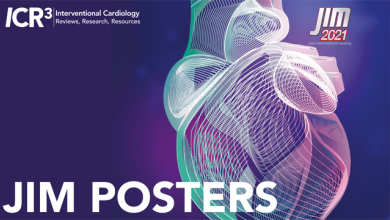Search results
PROMOTED
Author(s):
Nicolas M Van Mieghem
,
Kendra J Grubb
,
David Hildick-Smith
,
et al
Start date:
Mar 26, 2024
Author(s):
Brian G Hynes
,
Thomas J Kiernan
,
Nicholas J Ruggiero
,
et al
Added:
3 years ago
Stroke-related morbidity and mortality remain unacceptably high. Recent estimates suggest that it accounts for approximately one out of every 17 deaths in the US, and that a person dies from the direct consequences of stroke every three to four minutes.1 Of the almost 800,000 strokes that occur annually, 87% are ischaemic, the remainder occurring predominantly as a consequence of intracerebral…
View more
Author(s):
Bahaeddin Shabaneh
,
Neil Strickman
,
Zvonimir Krajcer
Added:
3 years ago
Carotid stenting has been introduced for the treatment of carotid artery stenosis as a potentially less invasive therapy than carotid endarterectomy, because carotid stenting does not require general anaesthesia and does not lead to local surgical complications. Despite major technical progress in decreasing the risk of embolisation, this risk continues to be a hurdle in the acceptance of carotid…
View more
Author(s):
Fausto Castriota
,
Armando Liso
,
Giancarlo Biamino
,
et al
Added:
3 years ago
Carotid angioplasty and stenting (CAS) is becoming a frequent therapeutic strategy for approaching severe carotid obstructive disease and is now widely accepted as a less invasive technique that provides an attractive alternative for many patients, particularly those with significant co-morbidities.1–6 From a technical standpoint, the continuous evolution of carotid stent design increases the…
View more
Author(s):
Stefan Bertog
,
Marius Hornung
,
Jennifer Franke
,
et al
Added:
3 years ago
Strokes are frequently devastating events with potentially fatal complications and significant disability, resulting in a major impact on the affected individual’s quality of life. It is well accepted that the presence of carotid stenosis is responsible for 20–30% of strokes.1 Great effort has therefore been invested in the search for treatments to reduce the stroke risk attributed to it…
View more
Author(s):
Fabrizio Fanelli
,
Emanuele Boatta
,
Pierleone Lucatelli
,
et al
Added:
3 years ago
Stroke is the third leading cause of death and permanent disability in the US and Europe. It is estimated that there are over 700,000 new cases of stroke each year in the US, of which 20–30% are thought to be secondary to carotid thromboembolic disease.1 In the last few years, carotid artery stenting (CAS) has significantly expanded as an alternative treatment to the conventional surgical carotid…
View more
Author(s):
Subbarao Myla
,
Sepideh Kazemi
Added:
3 years ago
Insights from Carotid Artery Stenting Registries
Registries tend to have less stringent inclusion and exclusion criteria than randomised trials and provide real-world data on a broad variety of patients treated by a range of interventionists of varying experience. Registries serve to provide first-time evaluation of new devices, help set up learning curve pearls, can be hypothesis-generating and…
View more
Author(s):
Krystal Dinh
,
Lucy Manuel
,
Kalpa Perera
,
et al
Added:
2 years ago
Author(s):
Johan Formgren
Added:
3 years ago
Since the publication of the Endarterectomy versus Angioplasty in Patients with Symptomatic Severe Carotid Stenosis (EVA-3S) and Stent-supported Percutaneous Angioplasty of the Carotid Artery versus Endarterectomy (SPACE) studies, doubts have been raised regarding the safety of carotid artery stenting (CAS) as an alternative carotid intervention to carotid endarterectomy (CEA). A recent meta…
View more
Author(s):
Satinder K Sandhu
Added:
3 years ago
Over the last three decades numerous transcatheter therapies for the treatment of congenital heart disease (CHD) have been developed.
Interatrial Septal Defect
Balloon atrial septostomy has been performed in patients with transposition physiology and in patients where egress of blood is needed from the left or the right atrium and in adults with pulmonary vascular disease where the creation of…
View more











